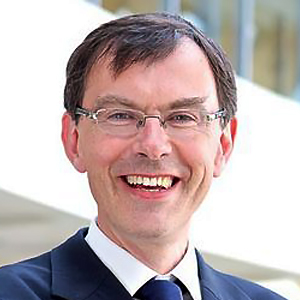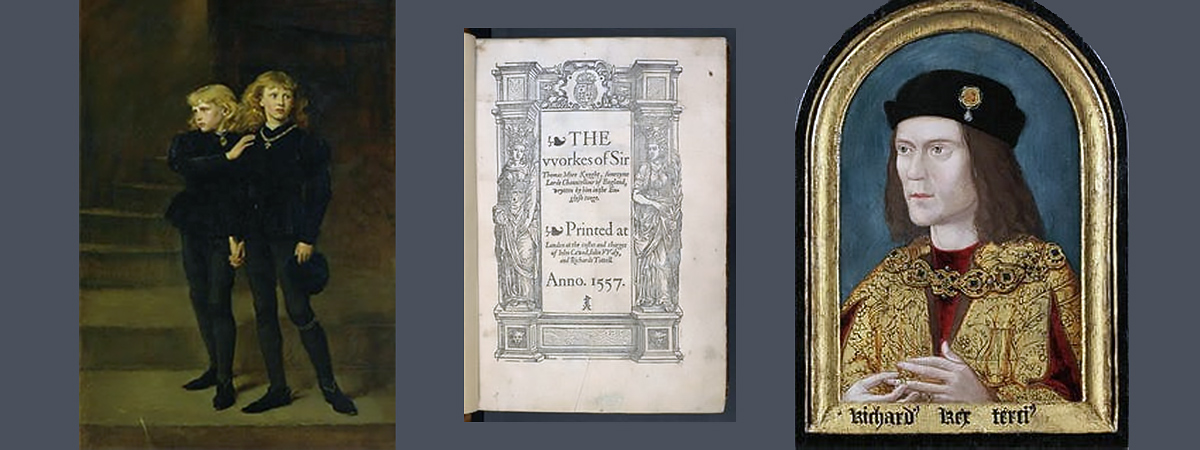
Professor Tim Thornton
WRITES FOR THE CONVERSATION
The University’s Deputy Vice-Chancellor and Professor of History Tim Thornton has conducted research into perhaps one of the greatest murder mystery stories in British history – a young king and his brother now dubbed “the Princes in the Tower”, were held in the Tower of London in 1483, but disappeared from public view, never to be seen again. In an article for The Conversation, he writes about why he believes his most recent research provides the most powerful evidence yet as to who the boys’ murderers were. And it connects the murderers directly to Richard III.
“It is perhaps one of the greatest murder mystery stories in British history – a young king and his brother simply vanish. The boys, now dubbed “the Princes in the Tower”, were held in the Tower of London in 1483, but disappeared from public view, never to be seen again.
Richard III has long been held responsible for the murder of his nephews in a dispute about succession to the throne. But Richard’s defenders have pointed to a lack of hard evidence to connect the king to the disappearance of the princes – who were aged just 12 and nine when Richard took the throne in June 1483.
But I believe my recent research provides the most powerful evidence yet as to who the boys’ murderers were. And it connects the murderers directly to Richard III.

The princes
The first detailed account linking the deaths of the princes to Richard can be found in the History of King Richard III by Sir Thomas More, a public servant who from 1518 served on Henry VIII’s Privy Council and later became Lord Chancellor (Henry succeeded to the throne in 1509, after his father defeated Richard III in 1485). In his book, written about 30 years later, More names two men, Miles Forest and John Dighton, as the murderers. And says they were recruited by Sir James Tyrell, a servant of Richard III at his orders.
Sir Thomas More claims that Richard felt he wouldn’t be fully accepted as king while the boys were still alive, so he made a plan to get rid of them. He ordered the Constable of the Tower to give Tyrell the keys to the Tower for one night. Tyrell planned to murder the boys in their beds and chose Forest, one of their servants, and Dighton, who looked after his horses, to do the deed. All the other servants were ordered to leave so the murder could be carried out. Then Tyrell ordered the men to bury the boys at the foot of some stairs, deep in the ground.
Written over 30 years after the events, it is easy for Richard’s supporters to dismiss More’s version of events. Indeed, many people have questioned this story, seeing it as “Tudor propaganda”, designed to blacken the name of a dead king. It has even been suggested that the names of the alleged murderers were made up by More.
But I’ve discovered that the names More gives for the men who are alleged to have killed the princes (Forest and Dighton) are not imaginary, but real people.
Finding the clues
By the middle of the 1510s when More was working on his book, Edward Forest, son of suspect Miles Forest was a servant of Henry VIII’s chamber, and Miles, his brother, was employed by top adviser Cardinal Thomas Wolsey. In this way, the sons were living and working alongside More – meaning he would have been able to speak with them directly.
Both brothers were also the recipients of royal grants and leases of royal lands and offices. This shows how favoured they were by Henry VIII and builds on evidence I have discovered to suggest the brothers were at the heart of the Tudor regime.
I’ve also discovered that when More was composing his other great work, Utopia, in 1515 – and very likely thinking through the History of King Richard III – Miles Forest junior was a messenger between Henry VIII’s court in England and the embassy on which More served. This connects More’s world very directly to the story he is telling, and to the man he says is the leading murderer of the princes in the Tower.
This is a story that is not going away anytime soon. Indeed, the recent announcement of a new film about the rediscovery of Richard III, written by Steve Coogan and Stephen Frears, shows that interest in the controversial monarch is as strong as ever.
And while my latest evidence does not prove definitively that Richard III murdered his nephews, it is certainly clear proof that More wrote his history when he was in direct contact with the men who were closely associated with this most notorious of crimes.”
- The original article can be viewed on The Conversation
More articles on The Conversation
More articles on The Conversation - 0 articles matching your search
More articles on The Conversation - 1 article matching your search
More articles on The Conversation - {{numberOfPosts}} articles matching your search
